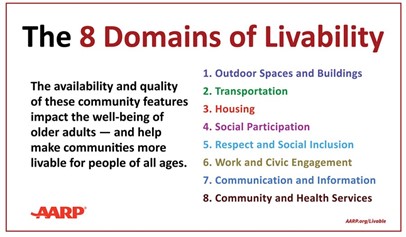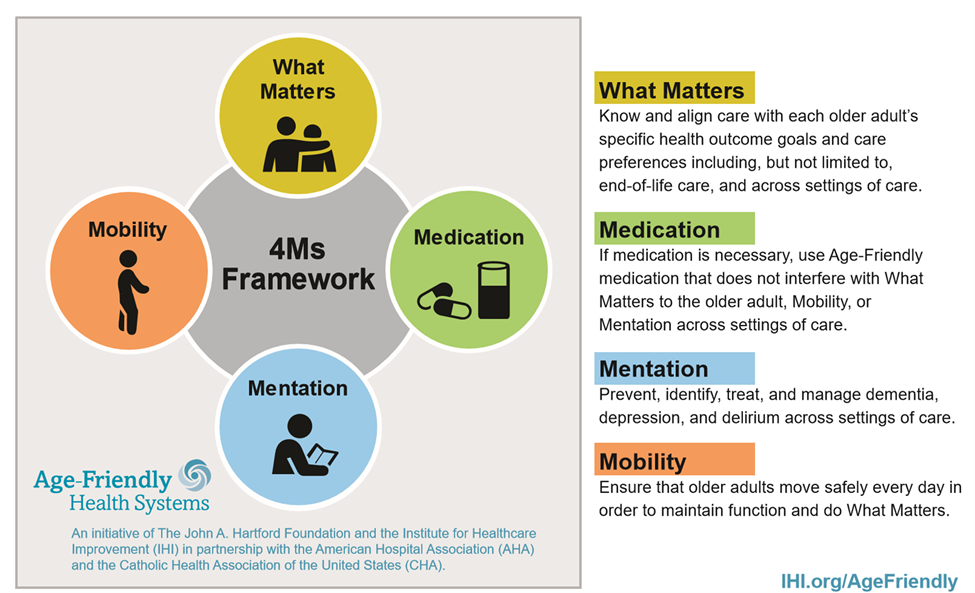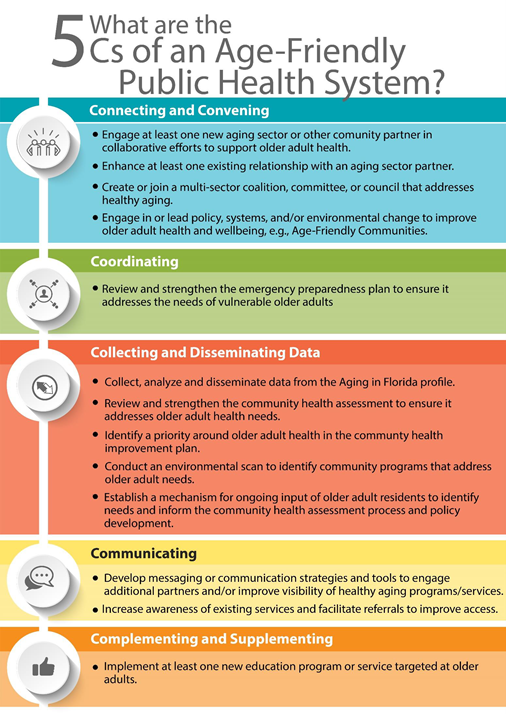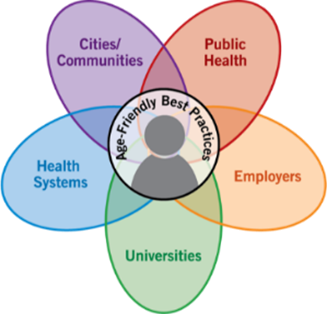What’s Public Health Got To Do With…the Age-Friendly Ecosystem?

By Katie Cunningham and Jane Carmody
Robert Butler M.D. was a visionary in the field of aging and foresaw the impact that the aging population of the U.S. would have on all aspects of society. Dr. Butler coined the term ageism in recognition of discrimination against older people and called on everyone to address ageism and promote conditions that improve the quality of life for all of us as we age.
More than 40 years after Dr. Butler’s Pulitzer-prize winning publication, “Why Survive: Being Old in America” the World Health Organization (WHO) called upon cities to be “age-friendly”. The WHO said fundamental shifts will be required not only in the actions we take but in how we think about age and aging (ageism). Being age-friendly means including older people as members of the community—as consumers, workers, students, and patients – and boldly paints aging as a positive development to be embraced at every level of society, rather than feared.
In 2006, the WHO invited cities to make a commitment to become age-friendly. AARP embraced driving age-friendly development in the U.S. in 2012, by promoting Age-Friendly Communities and engaging local officials and partners around the country to identify areas for improvement and opportunity. In designating Age-Friendly Community Domains of Livability, AARP highlights the necessity of cross-sector collaboration in achieving age-friendly ecosystems, including the potential for public health agency engagement.

Terry Fulmer, PhD, RN, FAAN declared that a community cannot be age-friendly without age-friendly healthcare, which she describes as, “… care that is safe and based on what research shows are the most important things to pay attention to as we get older – the 4Ms: what Matters, Medication, Mentation and Mobility.” The John A. Hartford Foundation (JAHF) partnered with the Institute for Healthcare Improvement to engage healthcare entities in assessing and acting on the 4Ms. Over 2,500 healthcare entities are now embracing age-friendly care, including hospital emergency and surgery departments.

Engaging public health’s expertise and its critical role in the well-being of the broader community was recognized as a vital next step within the growing momentum for age-friendly ecosystems. JAHF partnered with Trust for America’s Health (TFAH) to develop and launch the Age-Friendly Public Health Systems (AFPHS) initiative. AFPHS health departments are adapting to prioritize healthy aging in all operations to protect and promote health across age groups. TFAH developed a Framework for Creating Age-Friendly Public Health Systems, focused on five crucial roles for public health: the 5C’s Framework.

With the current growth of age-friendly initiatives, public health involvement will allow the coordination of actions necessary to create an age-friendly ecosystem of policies and practices. In doing so, the coordination of age-friendly initiatives enables identification of programmatic and service gaps and elevates strategies to build a complete age-friendly ecosystem. Public health entities can enhance collaboration and partnership between hospitals, health systems, providers, public health, government agencies, community-based organizations, older persons, and caregivers, and, by doing so, provide more to benefit older people in all aspects of living.

JAHF partners with the Age-Friendly Institute to understand the diverse wants and needs of older adults and their caregivers. The Age-Friendly Institute gives voice to older adults and their caregivers by crowd-sourcing answers to “how do we make aging easier?” and provides trusted content in a confusing landscape. Understanding the unique considerations of various aging populations allows a coordinated approach to all age-friendly initiatives and informs development of age-friendly ecosystems. The AFPHS Initiative offers a roadmap to leverage public health’s expertise to bridge institutional divides and implement multi-layered age-friendly interventions that address the complex needs of all older adults and allow all of us to support and promote what matters at every age.